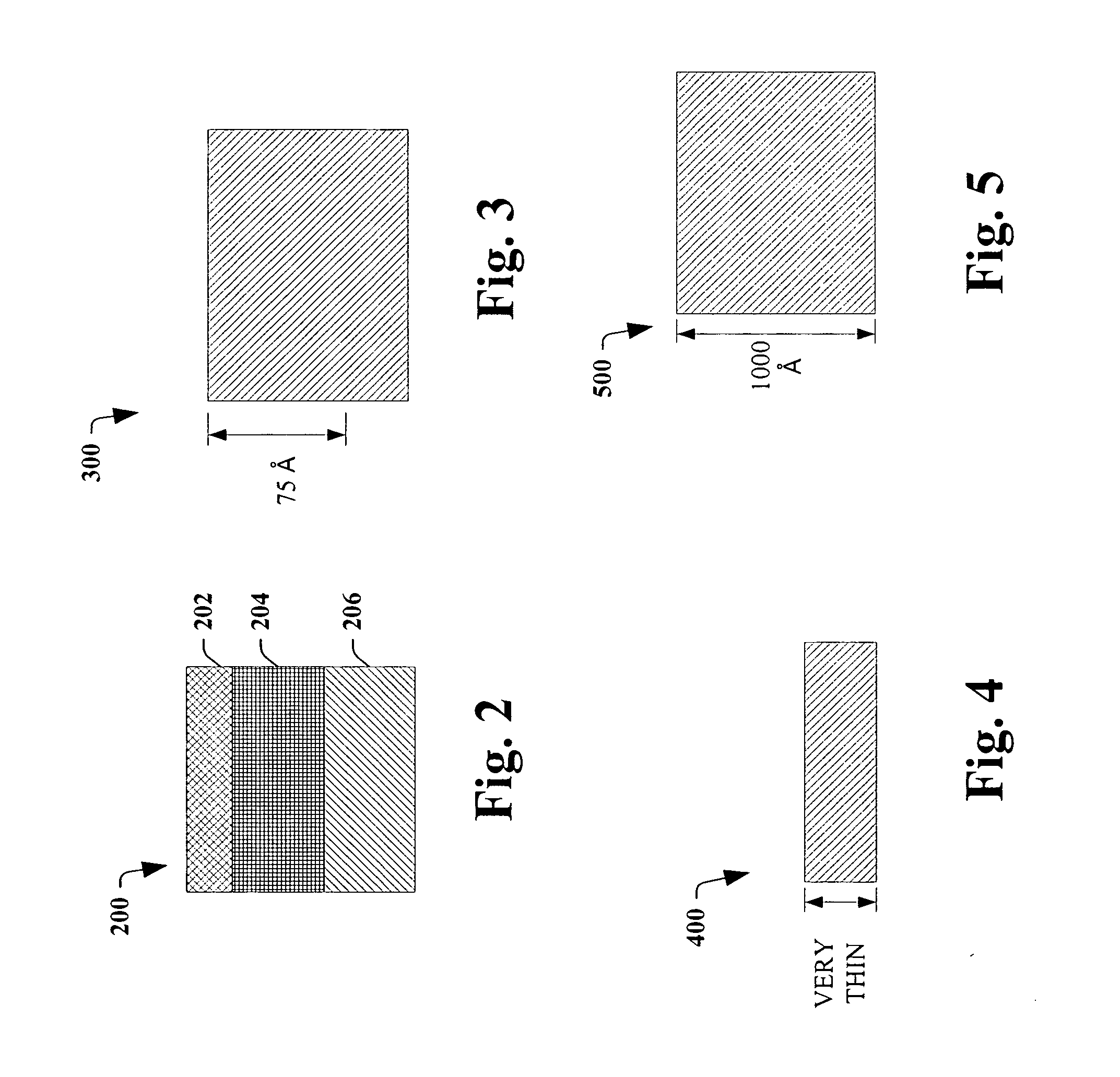Sidewall formation for high density polymer memory element array
a memory element array and polymer technology, applied in the field of semiconductor structure fabrication, can solve the problems of limited lithographic resolution, reduced lithographic resolution, and reduced lithographic resolution, so as to facilitate the deposit of conductivity facilitating compound and enhance chemical vapor deposition
- Summary
- Abstract
- Description
- Claims
- Application Information
AI Technical Summary
Benefits of technology
Problems solved by technology
Method used
Image
Examples
Embodiment Construction
[0040] The present invention is now described with reference to the drawings, wherein like reference numerals are used to refer to like elements throughout. In the following description, for purposes of explanation, numerous specific details are set forth in order to provide a thorough understanding of the present invention. It may be evident, however, that the present invention may be practiced without these specific details.
[0041] The present invention provides for a system and methodology for increasing number of organic memory cells associated with a lithographic feature, wherein memory elements are formed on sidewalls of the lithographic feature.
[0042] Such a multi-cell and multi-layer organic memory component can be formed with two or more electrodes having a selectively conductive media between the electrodes forming individual cells, while employing a partitioning component to enable lateral stacking of additional memory cells adjacent or in association with previously for...
PUM
 Login to View More
Login to View More Abstract
Description
Claims
Application Information
 Login to View More
Login to View More - R&D
- Intellectual Property
- Life Sciences
- Materials
- Tech Scout
- Unparalleled Data Quality
- Higher Quality Content
- 60% Fewer Hallucinations
Browse by: Latest US Patents, China's latest patents, Technical Efficacy Thesaurus, Application Domain, Technology Topic, Popular Technical Reports.
© 2025 PatSnap. All rights reserved.Legal|Privacy policy|Modern Slavery Act Transparency Statement|Sitemap|About US| Contact US: help@patsnap.com



